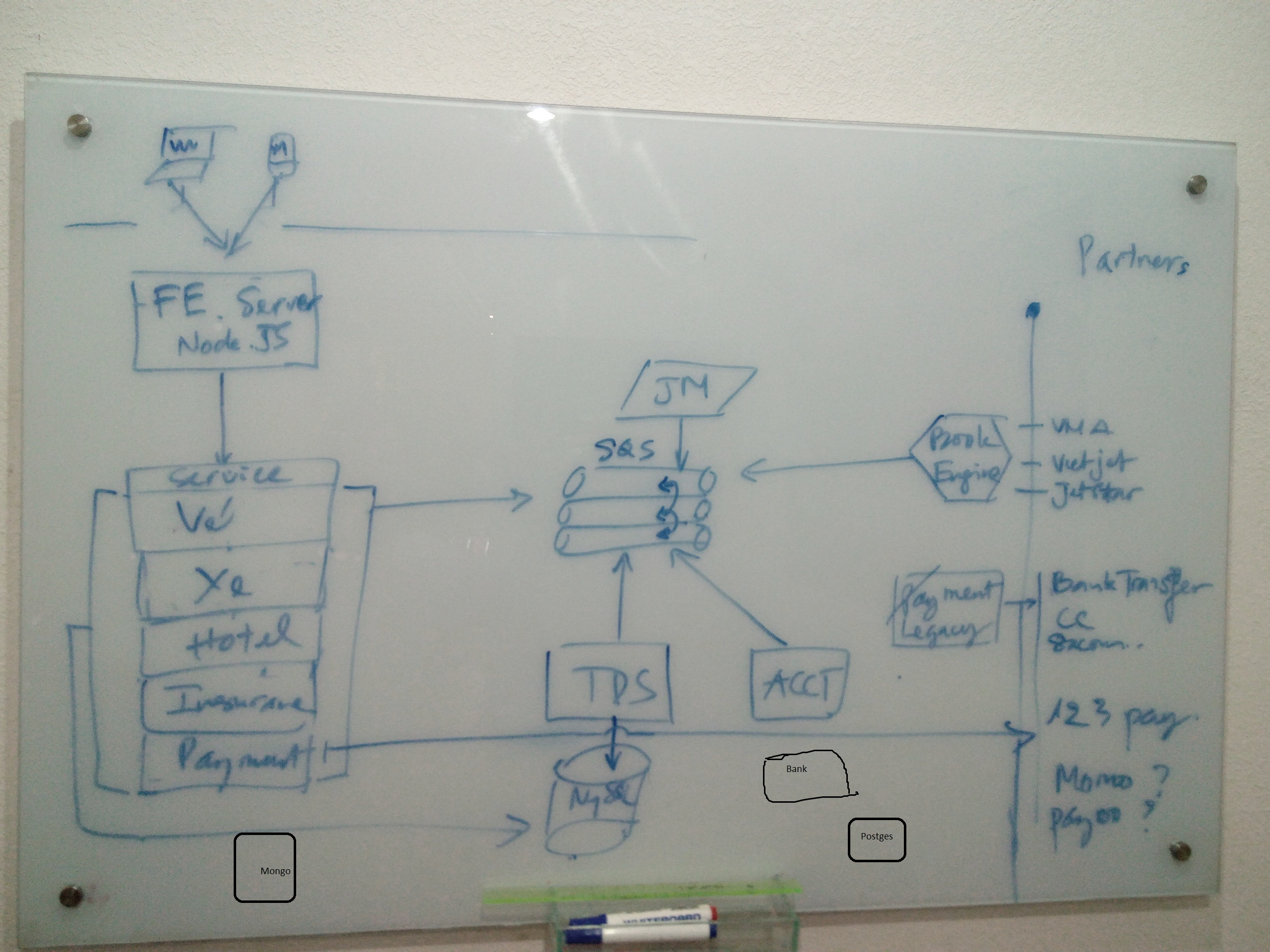
- Published on
How I Designed a Scalable Architecture to Double Revenue in Just 4 Months
- Authors

- Name
- Hung Nguyen (Alex)
When I joined Atadi as CTO, the company was experiencing some user complaints on transaction proccesing and revenue seem reach a limitation. With my experience in system optimization in the past and a systematic approach, I quickly knew that the system have a bottle-neck that limit our revenue.
Our airline booking system was gaining traction, but the existing monolithic infrastructure was overload under peak hours or VietjetAir 0 VND campaigns. The system had been built for the early stage startup (I was one in the team built the early version, as a freelancer).
To be clear, I joined the startup fulltime to build a new product: hotel booking system, and we did not aware the problem at that time. But as I saw our revenue report and look into the system metrics, I knew that we need to fix the system first before we move to focus on new product.
Fast forward 4 months later after we find out the problem and fix it, our revenue was growth double as a result of: system proccesed faster => user can do more transactions & keep staying on the platform.
The challenge was clear:
- System performance was limited as more user visits but revenue was not increasing.
- Database bottlenecks threatened transaction speeds and user experience.
- Some modules or functions need to run more than other parts of the system
- New product development was slow, the team was busy to resolve issues here and there.
The Solution: A Scalable, Distributed Architecture
Besise fixing the bottle-necks, to ensure Atadi could handle the next wave of growth while maintaining agility, I spearheaded a transformation of the platform’s architecture. Our strategy was built around three key pillars:
1. Transitioning to a Microservices Architecture
Instead of continuing to build on a monolithic system, we broke the platform into microservices to enable independent scaling, deployment, and iteration. Key services included (but not limited to):
- Booking Service (handling airline and hotel transactions separately)
- Pricing Engine (dynamically adjusting based on demand and airline/hotel APIs)
- User Management (centralized authentication and authorization)
This modular approach reduced interdependencies, allowing teams to work in parallel without breaking core functionalities.
2. Implementing a Scalable Database Strategy
The original system relied on a single relational database that was reaching its limits. To address this, we:
- Implemented database sharding to distribute load across multiple instances.
- Introduced read replicas to improve query performance for frequent searches.
- Used Redis for caching popular queries, reducing response times dramatically.
We also implementes DB replicas in Vietnam with some other components in Singapore to make transaction with airline systems in Canada and other countries.
3. Cloud-Native Infrastructure for Elastic Scalability
We migrated to a cloud-based Kubernetes environment to support automatic scaling. Key enhancements included:
- Auto-scaling policies that adjusted server resources dynamically based on traffic spikes.
- Containerized deployments for faster, more reliable releases.
- Centralized logging and monitoring with Prometheus and Grafana to proactively detect issues.
The Outcome: A System Built for Growth
- System uptime improved
- Booking transaction speeds improved
- Development velocity increased
- Atadi seamlessly handled extremely peak traffic during airline campaigns.
Key Takeaways for Scaling Fast-Growing Platforms
- Design for modularity early – A monolithic system might work in the early stages, but an eventual migration to microservices is inevitable if you anticipate rapid scaling.
- Optimize database performance – A scalable architecture requires smart data distribution, caching, and read optimizations.
- Leverage cloud elasticity – Cloud-native architectures with auto-scaling and containerization ensure resilience during traffic surges.
- Monitor everything – Proactive monitoring and logging are essential for troubleshooting and optimizing performance.
Final Thoughts
Scaling Atadi’s tech stack to support growth in such a short time frame was a challenging but rewarding experience. By prioritizing modularity, scalability, and performance optimizations, we built a system that not only met immediate demands but also set the foundation for future expansion.
For any CTO facing rapid growth, the key is balancing technical pragmatism with long term scalability, ensuring that every decision serves both the present and the future.
If you're scaling your own platform and want to discuss architecture strategies, feel free to reach out or share your thoughts in the comments!